Recent Articles
Popular Makes
Body Types
2021 Mini Cooper SE Electric vs. 2021 BMW i3
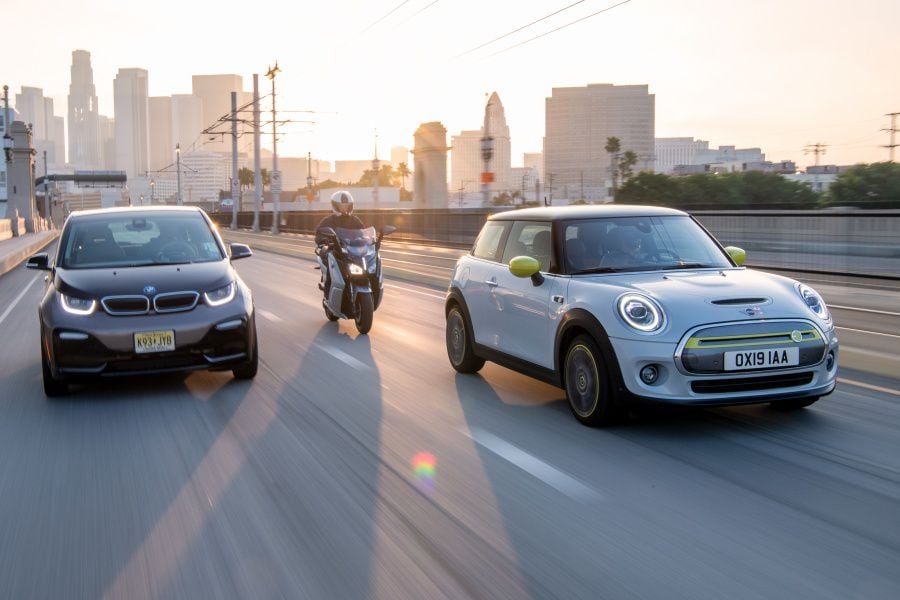
2020 Mini SE Hardtop and BMW i3 ・ Photo by MINI
This is a battle between two small electric hatchbacks with quirky personalities. And they’re both from the same company. That’s right, BMW owns Mini, and the two brands are both in the electric car business. It’s a family squabble. Let’s get it on.
The 2021 Mini Cooper SE is actually Mini’s second EV. The first, the Mini E, was sold in 2009 and 2010. The 2021 BMW i3 is the German brand’s first EV and it has been around since 2014. With the death of its more exotic brother, the i8, it is at the moment BMW’s sole pure electric vehicle currently on sale in the U.S. Both of these hatchbacks are fun to drive, are fun to look at, and seat four. But which is best? Let’s examine the 2021 Mini Cooper SE and 2021 BMW i3 in key areas and decide.
Styling and Design
Built in Oxford, England, the 2021 Mini Cooper SE basically looks like any other Mini Cooper. There are a few small differences, but you have to look closely. The charge port is above its right rear wheel. Its grille is blocked off and features a decorative yellow bar. Its rear apron is deeper to improve its aerodynamics. There’s no tailpipe. There is unique MINI Electric logo badging and aerodynamically optimized wheel designs. Otherwise, it’s twinsies with the gas-powered model — so it looks cool, but it doesn’t draw too much attention to itself.
The design of the 2021 BMW i3 is more out there. More wacky. Less conventional. It takes more chances. And after nearly seven years on the market, it still looks like nothing else. It’s short, stubby, tall, and skinny, with a greenhouse that looks as if it was designed by an Apple engineer after a few drinks. It also has reverse-opening rear doors, which help rear-seat access. And the BMW’s sleek interior is like fine furniture, which has helped push automotive cabin design forward. Is it beautiful? Not really, but we appreciate its daring.
BMW i3
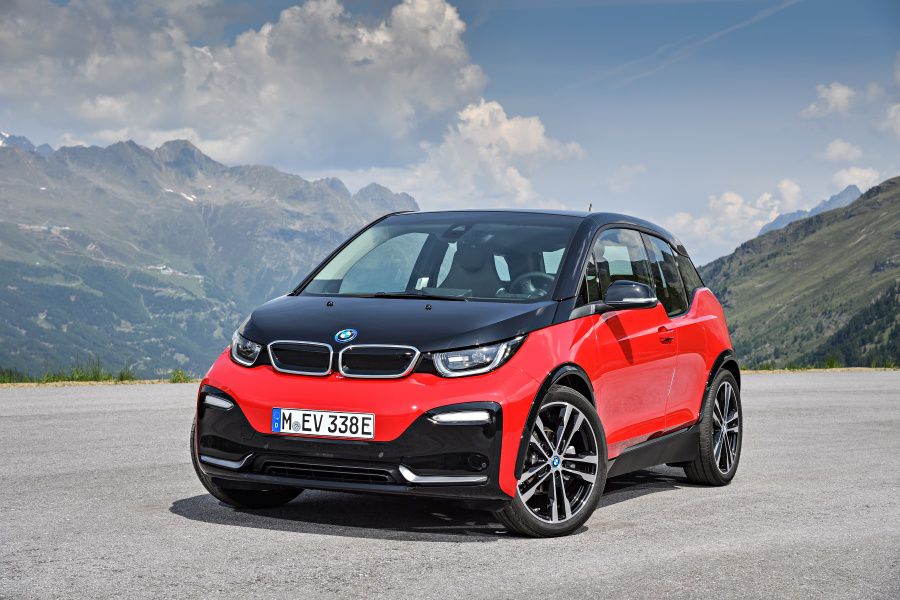
Photo by BMW
Comfort and Cargo
When it comes to comfort, the BMW i3 wins hands down. It has the larger interior, the more comfortable seats, and the smoother ride. The Mini isn’t uncomfortable, but it’s considerably smaller. And to achieve its sportier handling, Mini’s engineers have stiffened its suspension —sacrificing its ride quality.
Unsurprisingly, the larger BMW i3 also offers more trunk space than the Mini. BMW says there’s 9.1 cubic feet of cargo space back there and 36.9 cubic feet with its 50/50 split rear seat folded flat. It also has a small front trunk or frunk, which can swallow a briefcase. The Mini has 7.5 cubic feet of trunk space behind the rear seats and 26 cubic feet with the standard 50/50 split rear seat folded flat. It doesn’t have a front trunk.
BMW i3
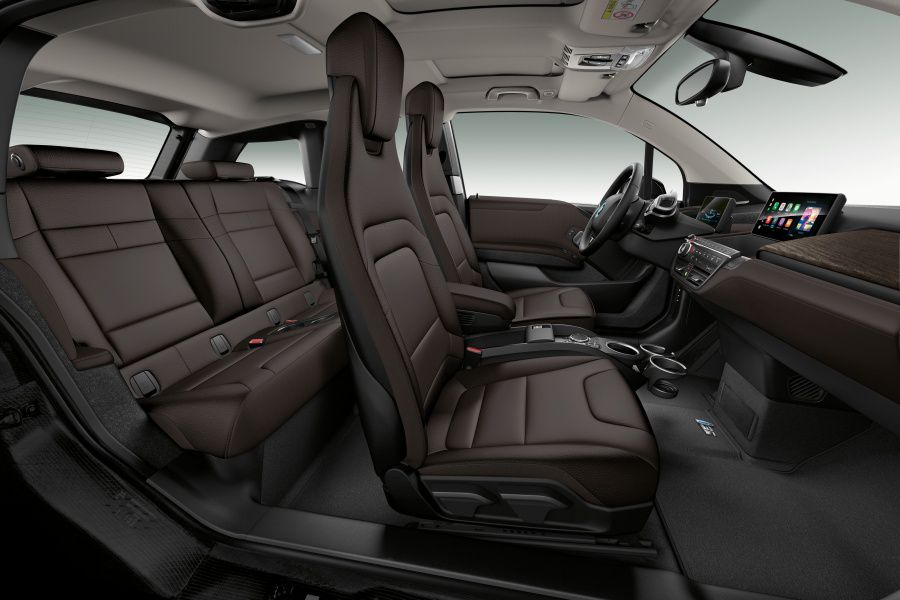
Photo by BMW
Infotainment System
A 6.5-inch infotainment screen is standard on the Mini Cooper SE, while an 8.8-inch screen is optional. Neither is a touchscreen, the Mini’s infotainment system is controlled with a knob on the console and it can be challenging to use. Still, yyou get used to it after a while. Navigation and Apple CarPlay integration, wireless charging, and a Harman/Kardon audio system are also available.
Many BMWs now use the seventh generation of the brand’s iDrive infotainments system, which is very simple to operate and has a touchscreen. All i3 models, however, come with older sixth generation of the system, which is just a bit more complicated and has a small 6.5-inch screen. Like the Mini’s system, it’s controlled by a knob on the console and features only Apple CarPlay integration, not Android Auto. Both systems function fine and get the job done, but neither is particularly special.
Tie
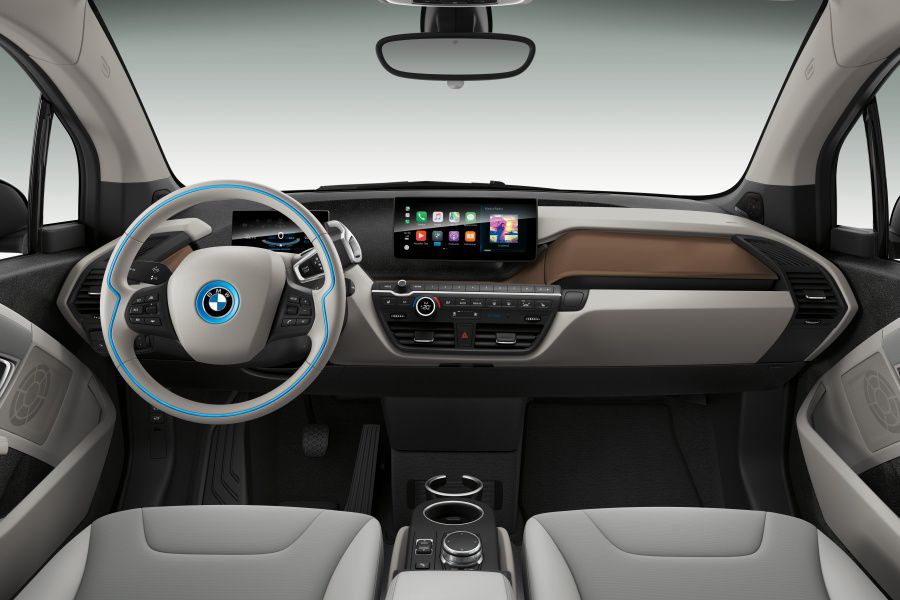
Photo by BMW
Safety and Technology
The 2021 Mini Cooper SE has not been crash-tested by the National Highway Traffic Safety Administration or the Insurance Institute for Highway Safety. It does come standard with a forward-collision warning and automated emergency braking with pedestrian detection, which gives it the edge over the BMW in this area of interest. Front and rear parking sensors and self-parking assist are also available.
Like the Mini, the BMW i3 has not been crash-tested by NHTSA. It performed pretty well in crash tests performed by IIHS, but not good enough to be named a Top Safety Pick. While the i3 offers automated emergency braking, a forward-collision warning, and adaptive cruise control, they are not standard features.
Mini Cooper SE
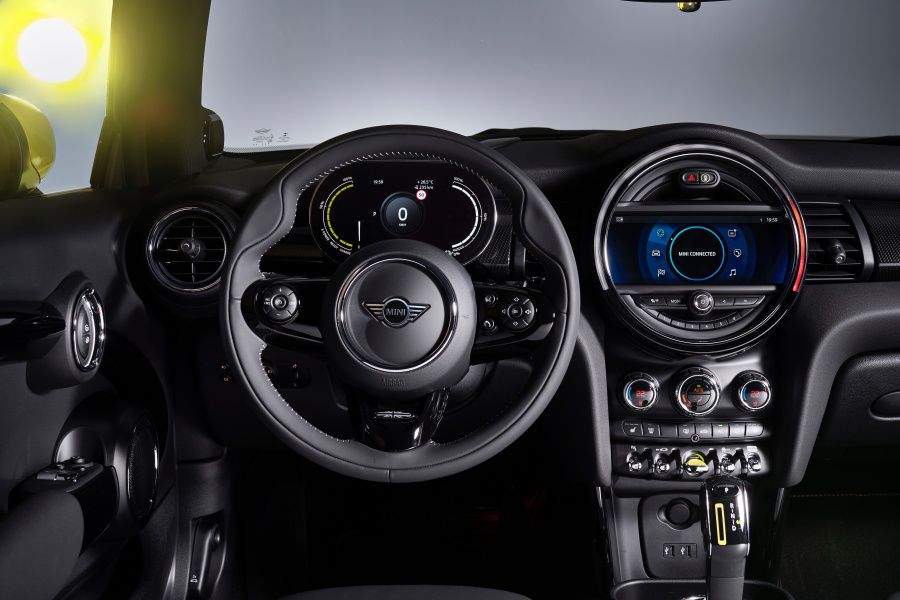
Photo by MINI
Power and Performance
The Mini is front-wheel drive and powered by a 32.6-kWh battery pack and an electric motor creating 181 horsepower and 199 pound-feet of torque. Mini says it hits 60 mph in 6.9 seconds and has a top speed of 93 mph. That’s fast enough to be very fun. Merging on the highway is a breeze and it’s beyond zippy around town. This little car will put a smile on your face.
The i3 is rear-wheel drive and BMW offers two versions: the i3 and the slightly more powerful i3s. Both have a single electric motor and a 42 kWh battery pack. The i3 has 170 hp and 184 lb-ft of torque, while the i3s has 181 hp and 199 lb-ft of torque. The i3s is the quicker of the two, but not by much — running to 60 mph in about 6.6 seconds. Though that’s marginally quicker than the Mini, they feel about the same around town.
Tie
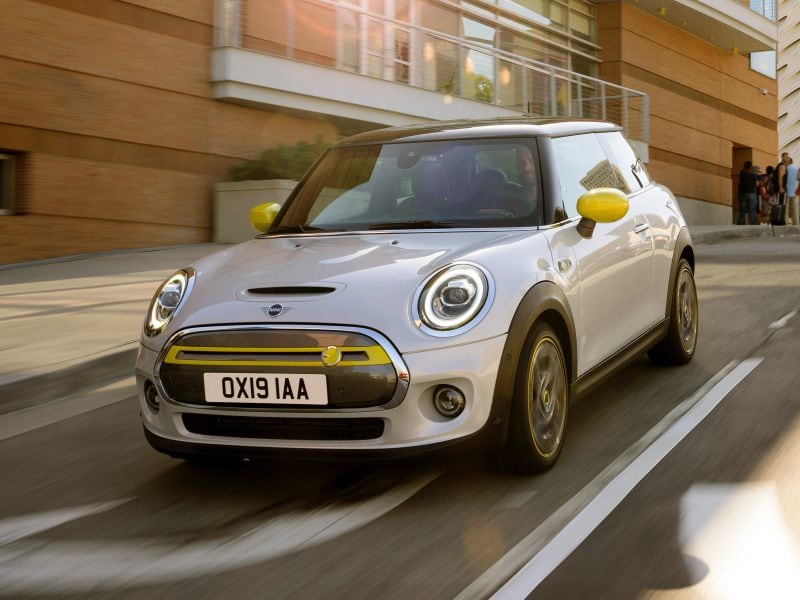
Photo by MINI
Range
These aren’t Teslas. In fact, these two cars have less battery range than most EVs. With a fully charged battery, the 2021 Mini Electric has an estimated driving range of just 110 miles. According to Mini, if you use a fast charger, the Cooper SE’s 32.6-kWh battery can be charged up to 80 percent in 35 minutes. Plug in at home at 7.4 kilowatts, and Mini says you can charge the car’s battery pack in four hours.
According to the EPA, both the BMW i3 and i3s have a battery range of 153 miles. That’s nearly 50 percent more than the Mini. BMW also offers two range-extender models, which basically operate like plug-in hybrids. They have 126 miles of all-electric range and another 74 miles burning gasoline for a combined range of 200 miles.
BMW i3

Photo by BMW
Driving Dynamics
Minis are fun to drive. All of them. Fun-to-drive is in the brand’s DNA. The 2021 Cooper SE lives up to that reputation with a lively chassis, responsive steering, and go-kart handling. This may be the world’s most agile car. It changes direction like a housefly. It’s a blast, but the ride is too firm for most buyers.
The BMW is also fun, with responsive steering and secure road holding. Some may also find its ride quality to be firm, but compared to the Mini, it’s like riding on a cloud. Both cars have aggressive regenerative braking systems, so they slow quite intensely when you let off the throttle. It feels odd at first, but you get used to it, and with time and a little practice, you can essentially drive without using the brake pedal at all.
BMW i3

Photo by BMW
Value
The Mini’s prices start at $30,750, including a modest $850 for destination and handling. The Signature Plus trim level costs $4,000 more, and the Iconic, like our test vehicle, starts at $37,750.
The BMW is considerably more expensive. Its base price of about $44,445, including its destination fee. The i3s costs $3,200 more, and the range extender models start at $49,295. It’s important to remember that both cars are eligible for a federal tax credit, which should effectively cut $7,500 from their MSRPs.
Mini Cooper SE
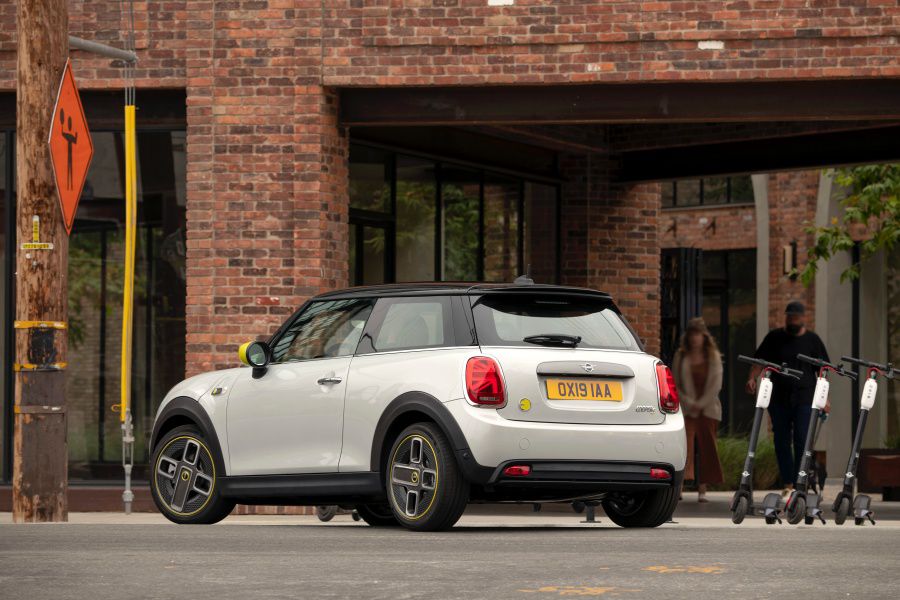
Photo by MINI
Verdict
We love driving the Mini. It’s a blast, with tight handling and zippy acceleration, and the Cooper SE is the better value undercutting the price of the BMW by, gulp... $14,000. It also offers more standard safety tech. Still, its firm ride, short battery range, and small backseat hand the victory to the BMW.
Though also fun, the i3 is more comfortable, more practical, more usable, and more spacious than the Mini. Plus, it can go nearly 50 miles further on a charge. It’s unfortunate that the BMW is so much more expensive than its rival, probably because its body structure is Carbon Fiber Reinforced Plastic, but budget permitting, the i3 will fit the lifestyle and needs of a greater number of buyers.
BMW i3
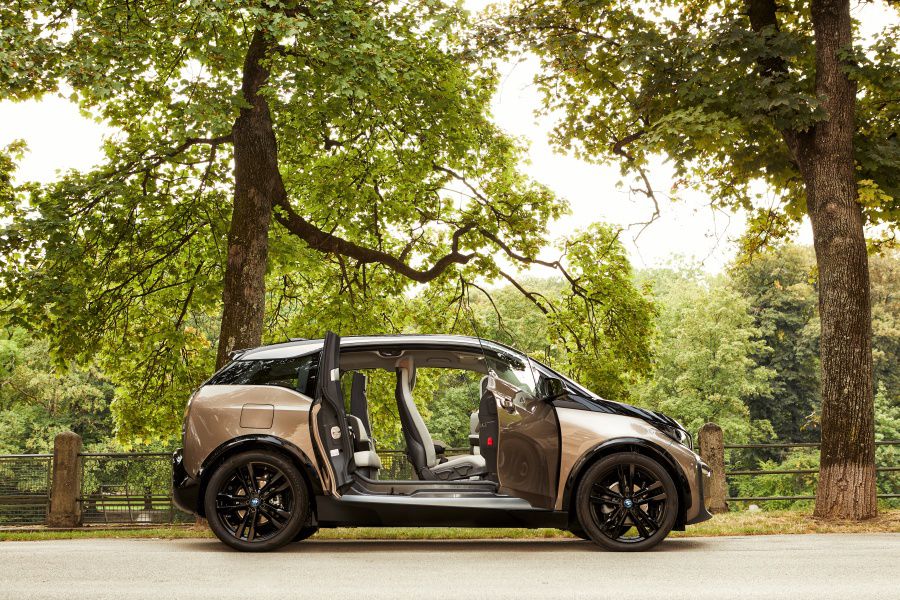
Photo by BMW